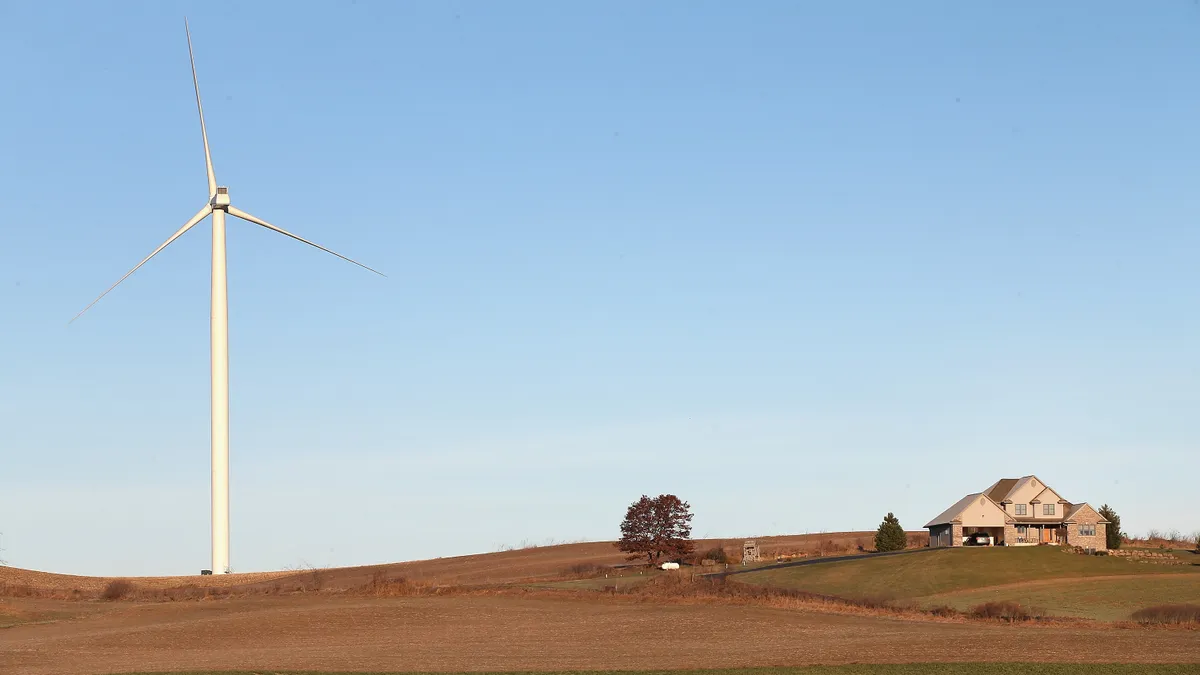The Treasury Department may have significantly overestimated in recent Inflation Reduction Act guidance the scope of “energy communities” where clean energy projects could receive extra tax credits, according to consulting firm Charles River Associates, or CRA.
The IRS issued Notice 2023-29 on April 4, aiming to provide clarity on which locations in the U.S. will provide renewable energy projects sited there with the energy community 10% bonus tax credit included in the IRA. The IRS plans to follow the interim guidance with a regulation, but said that in the interim, taxpayers can rely on the rules established in the notice.
During an April 13 CRA webinar, Vice President Patrick Augustine and Associate Ryan Iyer, both with the firm’s energy practice, presented slides stating that a CRA replication study using the IRS’s methodology for estimating the extent of energy communities found that the agency appeared to “significantly over-predict” them.
The slides say that the information provided by the IRS wasn’t sufficient for full replication, and as a result, the firm’s “assumptions on total employment may drive overall differences in extent.”
“At this time, I think we want to be careful not to say that the IRS was wrong per se, but that there is definitely a need for further diligence on this topic, and it should be monitored closely,” Iyer said.
Iyer said in an email that the firm has not yet had contact with the IRS about its mapping, and the IRS declined to provide a comment to Utility Dive.
During the webinar, Iyer said that further clarity is needed regarding a data source for a denominator for the “total employment” in metropolitan and non-metropolitan statistical areas, or MSAs and non-MSAs, as well as the IRS’s exact method for North American Industry Classification System, or NAICS, code delineation and aggregation.
“We used the eight NAICS codes that they listed, and aggregated them by the counties that were tracked to specific MSAs and non-MSAs,” Iyer said. “And from that, it actually appears that the IRS overestimates the total extent of energy communities.”
Energy communities under the law include brownfield sites, coal communities and areas with a specific mix of employment and local tax revenue related to fossil fuels. Guidance on qualifying communities, as well as the IRA’s provisions for domestic content, transferability, and the manufacturing and production tax credits, are anxiously awaited by industry.
In addition to the potential discrepancy CRA alleges in regard to the employment data, Iyer said during the webinar that the Mine Safety and Health Administration database used to identify closed coal mines “has a lot of errors, particularly with latitude, longitude and displacements” – an issue that the IRS is aware of and mentioned in the guidance.
“Taxpayers with evidence to correct irregular location information of coal mines abandoned or abandoned and sealed since December 31, 1999, may provide that evidence to the MSHA,” the guidance said. “In the event that data corrections are verified by the MSHA, the IRS will include this correction in an annual ministerial notice. The MSHA will not determine tax credit eligibility.”
During the webinar, Augustine said that errors in data provided by MSHA and the Energy Information Administration will “have to be corrected in order for the Treasury Department and the IRS to rule one way or another on a qualification, or, in essence, for that data to flow through the maps and the datasets that Treasury will be producing.”
“There's some uncertainty there in terms of how those agencies will either work together, or take comment, or make updates to datasets, in order to flow through the process here,” he said. “So looking forward as we track this, these are really several items that have to be monitored into the future.”
Augustine also said that the NAICS methodology and labor codes the IRS used could change over time, potentially as a result of stakeholder comment, or that a future administration could alter the qualifying code.
“So something to keep in mind from a risk perspective,” he said. “We have a good start here, and some good information from the Treasury Department, but there's a lot of questions that remain.”














